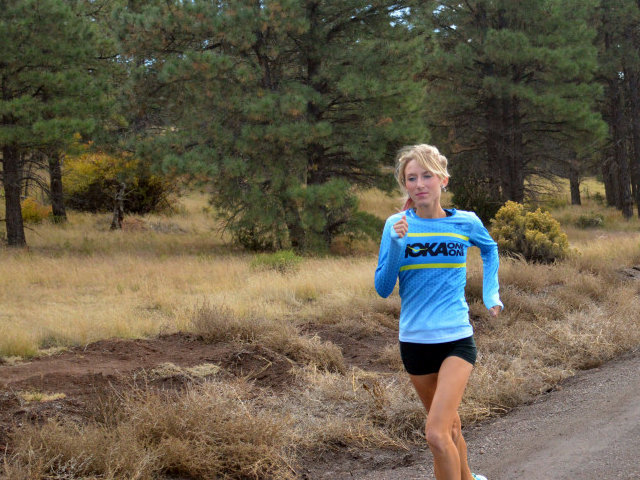Now that the weather has taken a turn for the better, many Milwaukeeans are headed outside to shed pounds they picked up during winter hibernation. If you are planning to start a running or walking program, here are 10 tips for a smart and healthy beginning to your spring training:
1. Check with your doctor if you are starting a new exercise routine. This is especially important if you haven't exercised in more than two years, or have any underlying medical conditions.
2. Start slowly. (Doing about half of what you think you should do is probably a good way to start!) If you are starting a running program, run no more than three times per week. If you are walking, four to five times per week is OK. You can cross-train a couple other days if desired -- combine biking, elliptical, swimming, weight training, etc. It is helpful to use a training diary to track your time or distances and make sure you don't do too much too soon.
Your body requires approximately three weeks to adapt to new exercise and loading on your tissues, and approximately six weeks to develop the tissue tolerance for longer and more aggressive activity. So, take the first three weeks easy, the next three weeks do a little more, and then from week six through twelve you can really start to get into it. Jogging 5-10 minutes, or walking 15-20 minutes is a good place to start.
A general rule of thumb is to increase your total weekly running volume by no more that 10 percent per week for running, or 20 percent per week for walking. Twenty to 30 minutes of running three times per week can provide excellent health benefits. Walking can have the same health benefits as running, but you have to do it longer, 30 to 60 minutes four to five times per week. Nordic walking, with poles, is about 15-20 percent more demanding from a cardio-vascular standpoint than regular walking. If you want a harder work out, or your joints can't handle the pounding of running, give this a try. Also, consider a pedometer. This is a fun accessory to count steps during the day, or measure distances of your walk or run.
3. Get the right equipment. It is important to get the correct shoes for running or walking. Generally, a running shoe will work best for either activity. Many "walking" shoes have a lower heel position that can create increased stress on your lower leg and lower back after sustained activity. There are also many more options for running shoes with regard to specific needs for your foot type and biomechanics. Department stores generally do not carry higher-level running shoes.
The lower-level shoes do not provide the same levels of cushion, nor the support options, that are available in the upper-level shoes. Department store shoes are roughly $40-$60 while the upper-level shoes typically start around $80 and are best fit by a specialty running shoe store. If your foot needs a specific type of support, it might not be available in a department store shoe selection where you are left on your own to decide what to buy.
Shoes will last roughly 500 miles. This could turn out to be one or two pair per year for many people. Comparing the price difference between department store shoes vs. running specialty store shoes, there is approximately a $5 per month difference over the year. If you are exercising regularly, it is well worth the difference to help prevent injuries and keep you moving. Also, wear these shoes only for your running or walking. Wearing them all day compresses the mid-sole material and makes the shoes less shock absorbing for your exercise when you need it most.
The other equipment you should consider is proper clothing. Technical fabrics for running gear are extremely comfortable and do not hold moisture like cotton. This prevents friction and is much lighter and dryer even when you are sweating, as these garments wick the moisture away from your body where it can evaporate. These fabrics are available in shorts, tops and socks as well as colder weather gear. Check out a running specialty store for these items, you will be amazed how they feel and how well they work.
4. Don't sweat the scale. If you are focusing your exercise for weight loss benefits, don't get on a scale until your exercise habit is well established -- at least three weeks. Also, the real weight loss benefits may not be realized for two to three months, so don't be discouraged and stay consistent.
5. Work out with a friend, or find a running / walking group. Working out with a partner can help you stay motivated. There are various running and walking groups in the Milwaukee area that have weekly workouts. The Badgerland Striders is a Milwaukee-based running club with a beginning running program as well as a marathon build-up program. Or, you can start a weekly workout group on your own with friends or co-workers. For more information on the running scene, contact your local running store.
6. Protect yourself from the sun. Sunscreen is important all the time, and coming into the warmer seasons it is even more so. Use a sweat resistant sunscreen, especially during peak sun times -- between 10 a.m. to 4 p.m.
7. Set a goal. Training for a specific event can be highly motivating. Pick a run, a walk or a bike event and prepare for it. Be sure to track your progress. Both the journey to the event and the event itself are very rewarding and beneficial to your health.
8. Don't push through pain. If you have pain, it is recommended that you stop activity for at least two to three days. Icing over the painful area for 15-20 minutes, two to three times per day, can be helpful. If it resolves, start up again at half distance and see if it recurs. If it does, ask for advice. Pain that persists for more that a week should be evaluated. See a physical therapist or your doctor. Make sure they are motivated to help you return to your training.
9. Stretch! Flexibility and strengthening exercises can help prevent imbalances that occur with the repetitive and limited motion activity of running and walking. Stretches for your calves, hamstrings, thighs and hips are the most important ones to start with. Or, try a yoga class. This will incorporate flexibility and strengthening activity together to benefit your training.
10. Have Fun. Stick with your routine. As you get fit, it will become easier and more fun. This will help you continue for the long run (or long walk).







